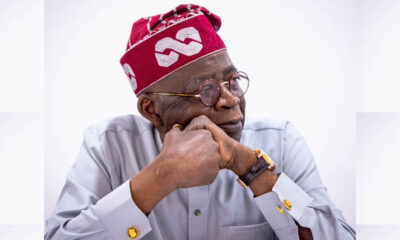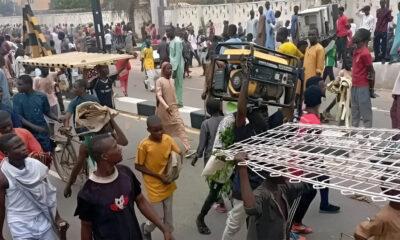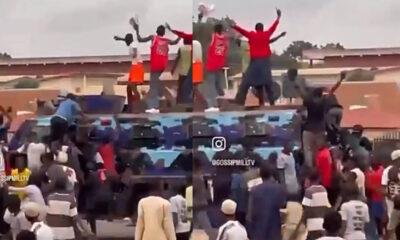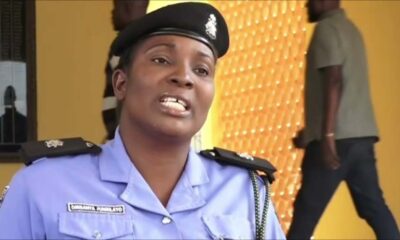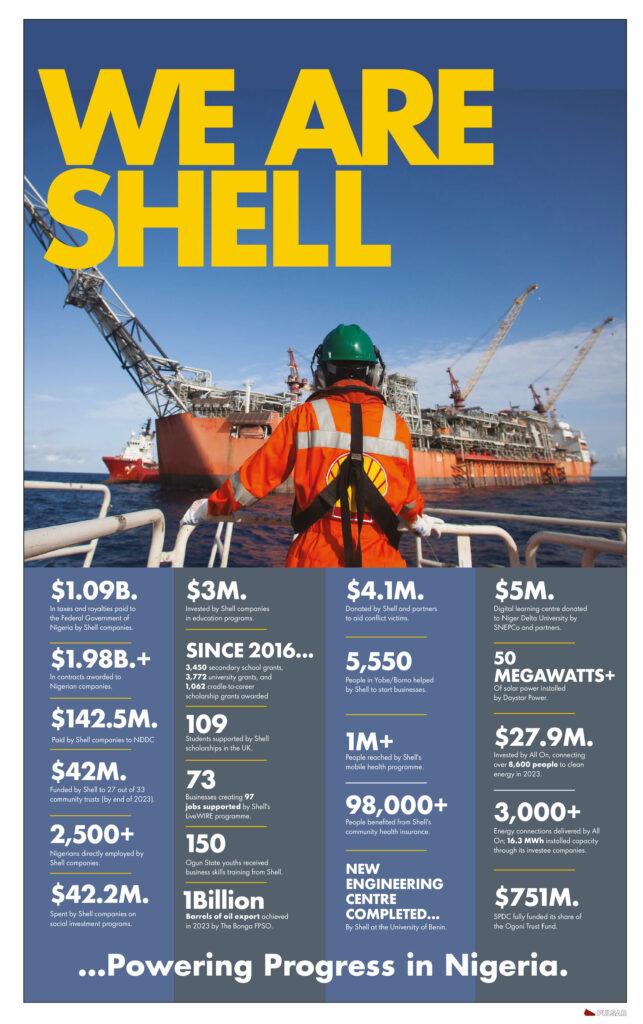International
90 killed as Bangladesh protesters insist Hasina must quit
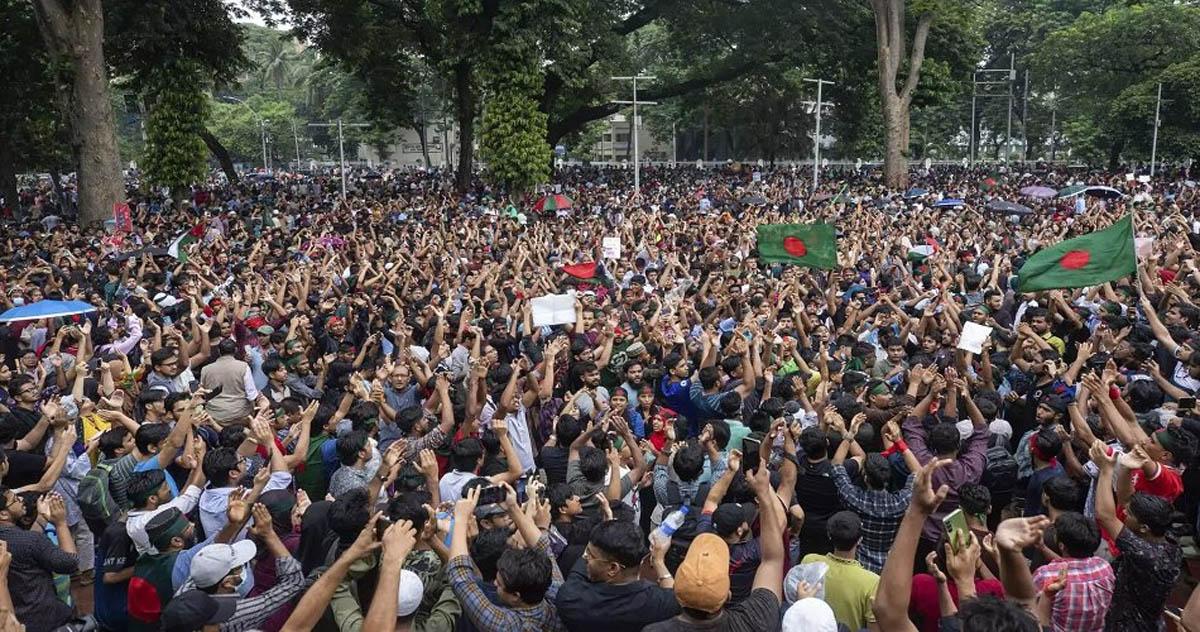
90 killed as Bangladesh protesters insist Hasina must quit
At least 91 people have been killed, including 13 police officers, and dozens more injured in a new round of violence in Bangladesh as police fired tear gas and lobbed stun grenades to disperse tens of thousands of protesters who returned to the streets to ask Prime Minister Sheikh Hasina to resign.
The deaths were reported by the police and doctors on Sunday in the capital Dhaka and the northern districts of Bogura, Pabna and Rangpur, as well as in Magura in the west, Comilla in the east, and Barisal and Feni in the south.
The attack on the police took place at the Enayetpur police station in the northwest city of Sirajganj, according to Additional Deputy Inspector General Vijay Basak of the Bangladesh police. The identity of the attackers is unknown.
The demonstrators are demanding Hasina’s resignation after earlier protests in July that began with students calling for an end to a quota system for government jobs and escalated into violence that killed 200 people.
Hasina said those who were engaging in the “sabotage” and the destruction in the name of protests were no longer students, but criminals, and said the people should deal with them with iron hands.
Authorities have blocked internet access and imposed a shoot-on-sight curfew. At least 11,000 people have been arrested in recent weeks.
‘Volatile and dangerous’
Deaths were reported from at least 11 districts including Bogura, Magura, Rangpur and Sirajganj districts, where the protesters backed by the main opposition party Bangladesh Nationalist Party (BNP) clashed with police and the activists of the ruling Awami League party and its associated bodies.
READ ALSO:
- Poverty: Shehu Sani accuses northern leaders, ex-presidents
- Cleric advises parents to lead by example in raising righteous children
- IBB denies endorsing military takeover, says X post fake
Al Jazeera’s Tanvir Chowdhury, reporting from Dhaka, described the situation as “volatile and dangerous”. “The protesters are saying that they are not going to move, until their government steps down,” he said.
“People are extremely worried [about] what’s going to happen,” Chowdhury said, adding that the crowd of protesters is growing. He also reported clashes between the protesters and supporters of the Awami League.
Prapti Taposhi, a student activist who witnessed clashes with police, told Al Jazeera the police were engaged in running battles with the demonstrators.
“I am on the street right now, and I can see so many people here. This is not just a student protest or a ‘quota protest’,” she said.
The government has now imposed an indefinite curfew that began at 6pm local time (1200 GMT), although protesters have continued to gather at the Shaheed Minar monument in central Dhaka.
Protesters called for “noncooperation”, urging people not to pay taxes and utility bills and not show up for work on Sunday, a working day in Bangladesh. Offices, banks and factories opened, but commuters in Dhaka and other cities faced challenges getting to work.
A ‘March to Dhaka’ protest has also been moved from Tuesday to Monday, a coordinator for the Anti-Discrimination Student Movement (ASD) told Al Jazeera.
“This means we are urging students and the public nationwide to start their journey to Dhaka tomorrow to lay siege to the city,” the coordinator, Asif Mahmud, said.
The government, meanwhile, announced a holiday from Monday to Wednesday. Courts will remain closed for an indefinite period. Authorities also closed schools and universities across the country.
Mobile internet service was off on Sunday, while Facebook and messaging apps including WhatsApp were inaccessible even on broadband internet. Junior Minister for Information and Broadcasting Mohammad Ali Arafat said mobile internet and messaging services were off to help prevent violence.
READ ALSO:
- Paul Okoye slams Joe Igbokwe over post on rift with twin brother, Peter
- Fuel scarcity: We’re at mercy of tank farms, marketers cry out
- Newlywed woman hangs self after fight with hubby
Arafat added to Al Jazeera that the government was acting “in a defensive position, not an offensive one”.
“These miscreants attacked our activists and leaders and unleashed violence,” Arafat said, adding that the government has “always opted for a peaceful solution” and “never wanted violence”.
The deadly protests began last month as students demanded an end to a quota system that reserved 30 percent of government jobs for the families of veterans who fought in Bangladesh’s war of independence against Pakistan in 1971.
As violence intensified, the country’s Supreme Court scaled back the quota system to 5 percent of jobs, with 3 percent for relatives of veterans.
But protests have continued demanding accountability for violence the demonstrators blame on the government’s use of excessive force.
The unrest, which spurred the government to shut down internet services, is its biggest test since January when deadly protests erupted after Hasina’s Awami League won a fourth straight term in elections boycotted by the BNP.
The protests have now grown into a wider antigovernment movement across the South Asian nation of some 170 million people. At least 11,000 people have been arrested in recent weeks.
Critics of Hasina, along with several rights groups, have accused her government of using excessive force to stamp out the movement, a charge it denies.
“We want the government to resign,” Jahirul Islam, a restaurant worker in Dhaka, told Al Jazeera.
Dhaka-based political analyst Zahed Ur Rahman said that the government would be unlikely to resign “without bloodshed”.
“For the past two days, peaceful gatherings and demonstrations have taken place across the country demanding the government’s resignation,” Rahman said, explaining that the protests were peaceful because of the absence of Awami League activists on the streets.
However, once ruling party’s activists went to confront the protesters “they use gun[s] and violence to quell a popular uprising in front of the whole world”, Rahman said.
Additional reporting by Faisal Mahmud in Dhaka, Bangladesh.
90 killed as Bangladesh protesters insist Hasina must quit
International
American govt approves Elon Musk’s Neuralink brain chip to restore vision

American govt approves Elon Musk’s Neuralink brain chip to restore vision
Tesla CEO Elon Musk has announced that Neuralink, his brain-chip startup company, has received approval from the US Food and Drug Administration (FDA) for an experimental implant device that will “enable even those who have lost both eyes and their optic nerve to see”.
“The Blindsight device from Neuralink will enable even those who have lost both eyes and their optic nerve to see. Provided the visual cortex is intact, it will even enable those who have been blind from birth to see for the first time,” the tech billionaire tweeted early Wednesday.
In the tweet on X (formerly Twitter), Musk posted a photo of Geordi La Forge, a character from the sci-fi TV series Star Trek, who is blind from birth but uses different technological devices that allows him to see.
“To set expectations correctly, the vision will first be at low resolution, like Atari graphics, but eventually it has the potential to be better than natural vision and enable you to see in infrared, ultraviolet, or even radar wavelengths, like Geordi La Forge”.
READ ALSO:
- Man remanded for allegedly defiling stepdaughter in Benue
- Tinubu govt inherited hardship from Buhari administration – Emir
- Edo poll: Set back for PDP as ex-deputy speaker dumps party
Co-founded by Elon Musk in 2016, Neuralink specialises in developing innovative brain-computer interfaces to transform treatments for neurological disorders.
Neuralink’s technology includes a brain implant that reads neural signals and wirelessly transmits them to external devices, including computers and mobile devices.
Business World reported that Neuralink is also developing an implant that enables paralysed individuals to control digital devices with their thoughts.
Neuralink is also reported to be conducting a clinical trial with three participants to evaluate the device’s effectiveness in aiding individuals with spinal cord injuries.
In August 2024, it was widely reported that Neuralink successfully implanted its brain-computer interface in a second patient, who is now able to control video games and create 3D designs using just their thoughts.
American govt approves Elon Musk’s Neuralink brain chip to restore vision
International
Major US labour union declines to endorse Harris, Trump
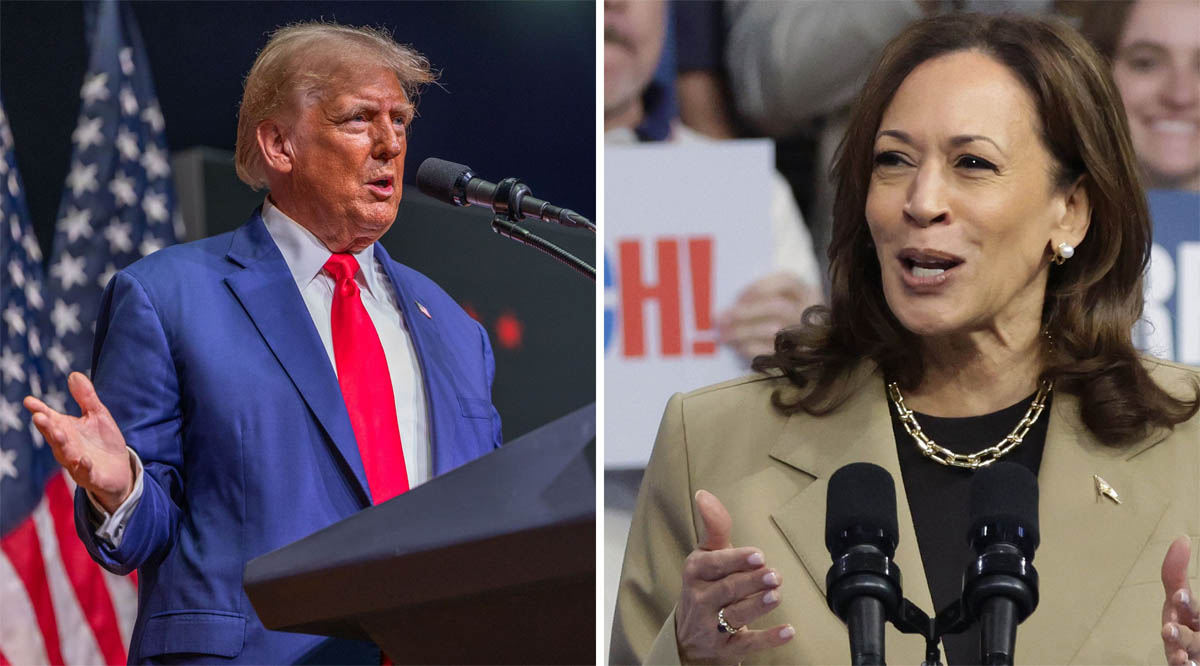
Major US labour union declines to endorse Harris, Trump
One of America’s most influential labour unions, the International Brotherhood of Teamsters, has declined to issue a US presidential endorsement for the first time since 1996.
The union, which boasts some 1.3 million members across the US and Canada, said it had received “few commitments on top Teamsters issues” from either Democratic nominee Kamala Harris or Republican nominee Donald Trump.
It also claimed that polling of its rank-and-file members found “no definitive support” for either candidate, though two of its recent polls indicated lopsided support for Trump.
The move is a major blow to the Harris campaign’s efforts to win over working-class voters with less than 50 days before election night.
An endorsement had the potential to mobilise thousands of Teamsters who live, work and vote in the crucial battleground states of Pennsylvania, Michigan and Wisconsin.
Shortly after the announcement, some Teamsters regional councils representing more than half a million members in Michigan, Wisconsin, Nevada and California, said they would be endorsing Harris.
In a statement, the Harris campaign touted its support from “the overwhelming majority of organised labour” and noted that many Teamsters locals have gotten behind her candidacy.
“While Donald Trump says striking workers should be fired, Vice-President Harris has literally walked the picket line and stood strong with organized labour for her entire career,” campaign spokesperson Lauren Hitt said.
The union’s rank-and-file – a coalition of members that includes freight drivers, warehouse workers and airline pilots – has long been considered politically diverse.
READ ALSO:
- 20 killed, 450 injured in second wave of blasts in Lebanon
- FG mutes new system against fraud, to enhance identity verification
- Fresh trouble over supply volume in Dangote refinery petrol
General President Sean O’Brien has sought to build inroads with Republicans since he took over leadership of the executive board in 2022.
He has reached out to more populist figures within the party, such as US senators Josh Hawley of Missouri and JD Vance of Ohio, who is now Trump’s running mate.
Mr O’Brien also met privately with Trump at his Mar-a-Lago estate in January, shortly before the former president attended a roundtable with the union’s board at its headquarters in Washington DC.
Following that meeting, Trump said he believed he had a “good shot” at receiving the union’s endorsement.
The board also met with President Joe Biden before he stepped aside as the Democratic nominee, as well as third-party candidates Robert F Kennedy Jr and Cornel West.
But the union alarmed Democrats when it made its first financial contribution to their opponents in years, donating $45,000 (£34,000) – the maximum allowed contribution – each to both the Democratic and Republican National Conventions in February.
Mr O’Brien also became the first Teamsters boss ever to address the Republican National Convention (RNC).
Invited to deliver a prime-time address at the event in Milwaukee, the union head praised Trump as “one tough SOB” but declined to endorse him.
He also later criticised Trump and top campaign surrogate and billionaire businessman Elon Musk over comments in which the two discussed firing workers who threaten to go on strike.
After his decision to speak at the RNC, Mr O’Brien did not receive an invitation from Democrats to address their party convention last month.
READ ALSO:
- School teachers begin indefinite strike in Abuja
- Police parade suspected ritualists, armed robbers in Osun
- Students can reapply for loans, we’ve resolved BVN verification glitch – NELFUND
The party instead invited rank-and-file members to represent the organisation and to speak from the convention stage.
Some members of the Teamsters have expressed anger with Mr O’Brien over his right-wing outreach.
Last month, the Teamsters National Black Caucus and six union locals defied national leadership by endorsing Harris on their own and urging members to get behind her.
On Monday, Harris met with the Teamsters board in a long-delayed roundtable that lasted an hour and a half.
A New York Times report described the sit-down as “sometimes tense”, but a Teamsters spokesperson disputed this characterisation when asked by the BBC.
During their meeting, the Times added, Harris told Teamsters leaders: “I’m confident I’m going to win this. I want your endorsement, but if I don’t get it, I will treat you exactly as if I had gotten your endorsement.”
Speaking to reporters after Harris had made her pitch, Mr O’Brien noted that “there wasn’t a whole lot of difference” between the answers she and her predecessor, Biden, had provided.
Biden has routinely touted himself as “the most pro-labour president ever”, pointing to policies that have made it easier for US workers to organise and that have prioritised union labour for federal government projects.
Last September, he made history as the first US president to walk a picket line, when he joined the United Autoworkers in Michigan in a strike against the Big Three US auto companies: General Motors, Ford and Stellantis.
The Biden administration also shored up the Teamsters pension fund to the tune of $36bn, which it says prevented cuts to the retirement incomes of over 600,000 members.
Mr O’Brien and other leaders have also acknowledged on several occasions that Biden has been “great for unions”.
But before he dropped out in July, some reports suggested that the Teamsters did not plan to endorse Biden’s bid for re-election.
Correction: An earlier version of this story was updated to reflect that the Teamsters are the fourth largest, not the largest, US union.
On Wednesday, ahead of its announcement that it would not endorse Harris or Trump, the union released polling data for its members.
In an electronic poll conducted after the RNC, rank-and-file Teamsters voted 59.6% for the union to endorse Trump compared to 34% for Harris.
A separate poll, commissioned in the past week, found Teamsters again backing Trump by a lopsided margin – 58% to 31%.
In spite of those results, the union said in a statement that its “extensive member polling showed no majority support for Vice President Harris and no universal support among the membership for President Trump”.
The Trump campaign quickly lauded the poll numbers on Wednesday.
“While the Teamsters Executive Board is making no formal endorsement, the hardworking members of the Teamsters have been loud and clear – they want President Trump back in the White House,” campaign press secretary Karoline Leavitt said.
Major US labour union declines to endorse Harris, Trump
BBC
International
20 killed, 450 injured in second wave of blasts in Lebanon
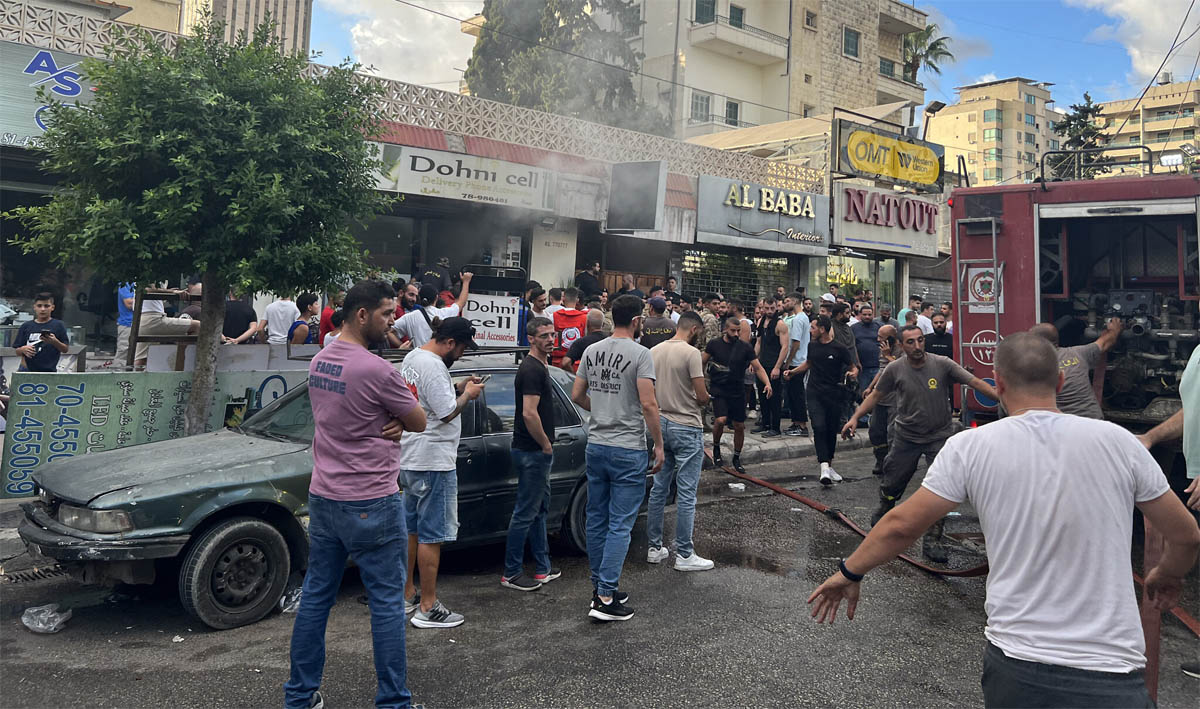
20 killed, 450 injured in second wave of blasts in Lebanon
BEIRUT: Explosions in Beirut and other parts of Lebanon were apparently a second wave of detonations of electronic devices, state media said on Wednesday.
The report said walkie-talkies and even solar equipment were targeted a day after hundreds of pagers blew up.
At least 20 people were killed and 450 were wounded, the Health Ministry said.
A Hezbollah official told the Associated Press that walkie-talkies used by the group exploded.
Lebanon’s official news agency reported that solar energy systems exploded in homes in several areas of Beirut and southern Lebanon, wounding at least one girl.
The new blasts hit a country thrown into confusion and anger after Tuesday’s pager bombings, which appeared to be a complex Israeli attack targeting Hezbollah members that caused civilian casualties, too.
At least 12 people were killed, including two children, and about 2,800 people were wounded as hundreds of pagers used by Hezbollah members exploded wherever they happened to be — in homes, cars, at grocery stores and in cafes.
Wednesday’s blasts caused fires, injuries and a state of hysteria because some of the devices were being carried by security personnel during the funeral ceremonies for the victims of the pager explosions on Tuesday.
READ ALSO:
- FG mutes new system against fraud, to enhance identity verification
- Fresh trouble over supply volume in Dangote refinery petrol
- School teachers begin indefinite strike in Abuja
Explosions were heard in the southern suburbs of Beirut and several areas in the south and the Bekaa Valley.
Many were injured outside hospitals where the wounded from Tuesday’s bombings were being treated. Several of the wounded were transferred to Baalbek hospitals.
Some devices exploded with their carriers in front of the American University Hospital in Beirut.
Four cars containing devices exploded in the town of Aabbassiyeh in the south, three people were injured when a device exploded in a car in Jdeidet Marjeyoun, and parked cars exploded in Nabatieh because there were wireless devices in them.
Ambulances rushed everywhere, and Hezbollah supporters went out on motorcycles searching for victims after abandoning all their communication devices.
The Lebanese Army Command asked citizens “not to gather in places witnessing security incidents to make way for the arrival of medical teams.”
According to initial information, the devices that exploded on Wednesday are Icom V82 models, bought in the deal for pagers last spring.
Panic increased when information circulated on social media about the explosion of solar panels connected to internet devices. There were also claims that computers exploded.
READ ALSO:
- Police parade suspected ritualists, armed robbers in Osun
- Students can reapply for loans, we’ve resolved BVN verification glitch – NELFUND
- PDP govs, NWC move to remove Damagun, Wike’s loyalist, as acting national chairman
A Hezbollah member in a video clip that showed a room with shrapnel damage, said: “This was because of the device’s battery. I removed it from the device and put it aside. Look what happened.”
Footage showed fires in residential apartments in the southern suburbs of Beirut and in the south, and casualties during funeral ceremonies after their devices exploded.
The Axios website reported that “Israel blew up thousands of wireless communication devices used by Hezbollah elements in a second wave.”
In the first wave of bombings, it appeared that small amounts of explosives had been hidden in the thousands of pagers delivered to Hezbollah and then remotely detonated.
The reports of further electronic devices exploding suggested even greater infiltration of boobytraps into Lebanon’s supply chain.
It also deepens concerns over the attacks in which hundreds of devices exploded in public areas, often with many bystanders, with no certainty of who was holding the rigged devices.
20 killed, 450 injured in second wave of blasts in Lebanon
-
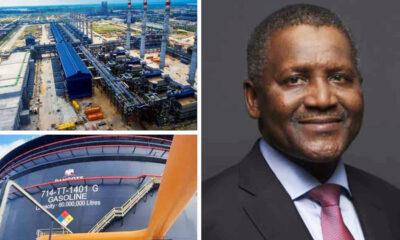
 Business2 days ago
Business2 days agoDangote refinery to transport 75% of fuel locally by sea
-

 metro2 days ago
metro2 days agoFour burnt to death, eight others injured in Ore-Ijebu Ode road crash
-
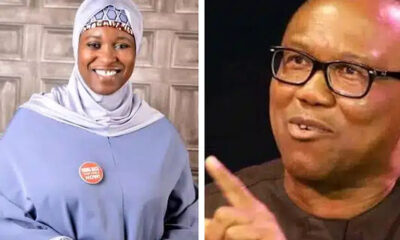
 Politics2 days ago
Politics2 days agoWhy I’ll work against Obi as running mate – Aisha Yesufu
-

 metro2 days ago
metro2 days agoUpdated: Controversial church testimony occurred in a dream, says Lord’s Chosen
-
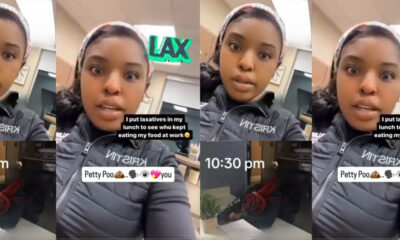
 metro2 days ago
metro2 days agoLady laces food with laxatives to know those eating it
-
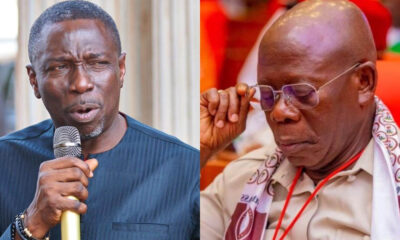
 News2 days ago
News2 days agoIghodalo sues Oshiomhole for N20bn ahead of Edo election
-
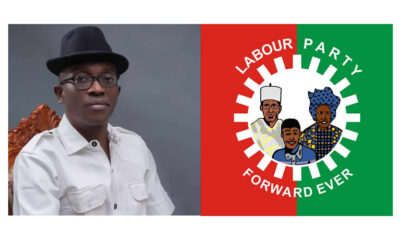
 Politics2 days ago
Politics2 days agoWe no longer recognise Abure as Labour Party chairman – INEC
-
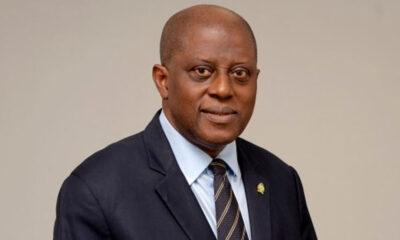
 News1 day ago
News1 day agoPresidency speaks on reports of Tinubu asking CBN gov Cardoso to resign

